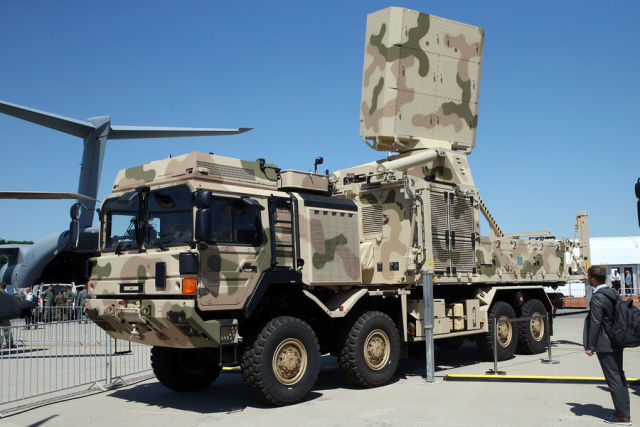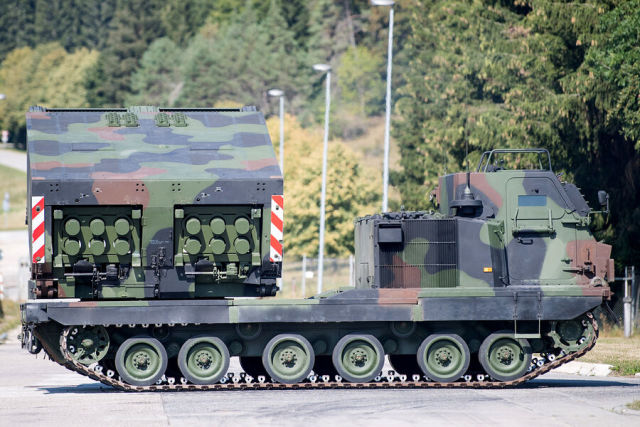Ex-Colonel of the General Staff Khodarenok explained why Berlin's military assistance does not save the AFU
German Chancellor Olaf Scholz announced the dispatch of "the latest weapons" to Ukraine. Military observer of the Newspaper.En" Mikhail Khodarenok figured out what kind of weapon it was, what threat it posed to the Russian army and whether its supplies would affect the course of the special operation.
Federal Chancellor Olaf Scholz was asked by the Canadian edition of The Globe and Mail: "Why has Germany reduced military support for Ukraine, despite promises to the contrary?"
The German leader replied as follows: "This is not true! We will stick to the facts. From the first days after Russia's attack on Ukraine, we have been supplying weapons and ammunition to Ukraine. We delivered everything we had: anti-tank and anti-aircraft systems, mines, guns, tons of ammunition and non-lethal aid. Since then, we have switched to more complex and expensive systems, self-propelled howitzers, multiple rocket launchers, anti-aircraft systems, radar counter-battery warfare. We are strengthening supplies."
The MARS II MLRS and IRIS-T SLM medium-range anti-aircraft missile systems deserve special interest in the weapons transferred from Germany to the Armed Forces of Ukraine as part of the latest package.
The main difference between MARS II and the original MLRS M270 lies in the European EFCS fire control system developed by Airbus. This SLA provides the use of GMLRS family missiles with a firing range of about 90 km and satellite correction. At the same time, the range of ammunition has been artificially reduced, since the developing countries have signed the Convention on Cluster Munitions, and therefore EFCS does not allow the use of missiles with such equipment.
The crew of MARS II consists of three people, including the driver, commander and gunner. They are placed in a closed cabin in the front of the car, in which they are protected from small arms fire, as well as fragments of artillery shells and mines. The capabilities of the combat vehicle allow the crew or even one calculation number to perform a combat task in full, including operations for loading and unloading rockets and missiles.
The IRIS-T SLM SAM, in turn, allows you to hit targets at a range from 1 km to 40 km and an altitude of up to 20 km. The SAM radar detects targets at a distance of up to 250 km.
The IRIS-T anti-aircraft missile systems are already in service with ten countries. Deliveries to Ukraine are expected no earlier than October of this year, since the IRIS-T-SLM air defense system is simply not available in the Bundeswehr, and the systems still need to be manufactured at the enterprises of the German military-industrial complex.
The IRIS-T SLM is capable of hitting helicopters, airplanes, as well as cruise, anti-ship, anti-radar and other types of missiles, in other words, almost all classes of aerodynamic targets. Deliveries of this complex to Ukraine will significantly strengthen the combat capabilities of the AFU Air Forces, which also include anti-aircraft missile troops. The IRIS-T is capable of hitting targets at medium and high altitudes. Previously, the air defense systems and complexes supplied to Ukraine by Western countries (with the exception of the NASAMS air defense system) mainly had an altitude reach of no more than 5-7 km.

IRIS-T
Image Source: Global Look Press
However, the system also has "weaknesses". The IRIS-T is based on a converted air-to-air missile, not a specially designed anti-aircraft munition. This creates a risk of not hitting low-altitude maneuverable targets.
In addition, this ZRS has a complex guidance system. The rocket first corrects its flight by GPS signal, and then the infrared homing head turns on. This makes the munition vulnerable to electronic warfare.
The main thing is that limited supplies of even such equipment as MARS II IRIS-T SLM are not able to help Ukraine and influence the course of a special operation. For such an impact, supplies must be measured in hundreds of combat vehicles.
The opinion of the author may not coincide with the position of the editorial board.
Biography of the author:
Mikhail Mikhailovich Khodarenok is a military columnist for the newspaper.Ru", retired colonel.
He graduated from the Minsk Higher Engineering Anti-Aircraft Missile School (1976), the Military Air Defense Command Academy (1986).
Commander of the S-75 anti-aircraft missile division (1980-1983).
Deputy Commander of the anti-aircraft missile regiment (1986-1988).
Senior Officer of the General Staff of the Air Defense Forces (1988-1992).
Officer of the Main Operational Directorate of the General Staff (1992-2000).
Graduated from the Military Academy of the General Staff of the Armed Forces of Russia (1998).
Columnist of "Nezavisimaya Gazeta" (2000-2003), editor-in-chief of the newspaper "Military-Industrial Courier" (2010-2015).
Mikhail Khodarenok

